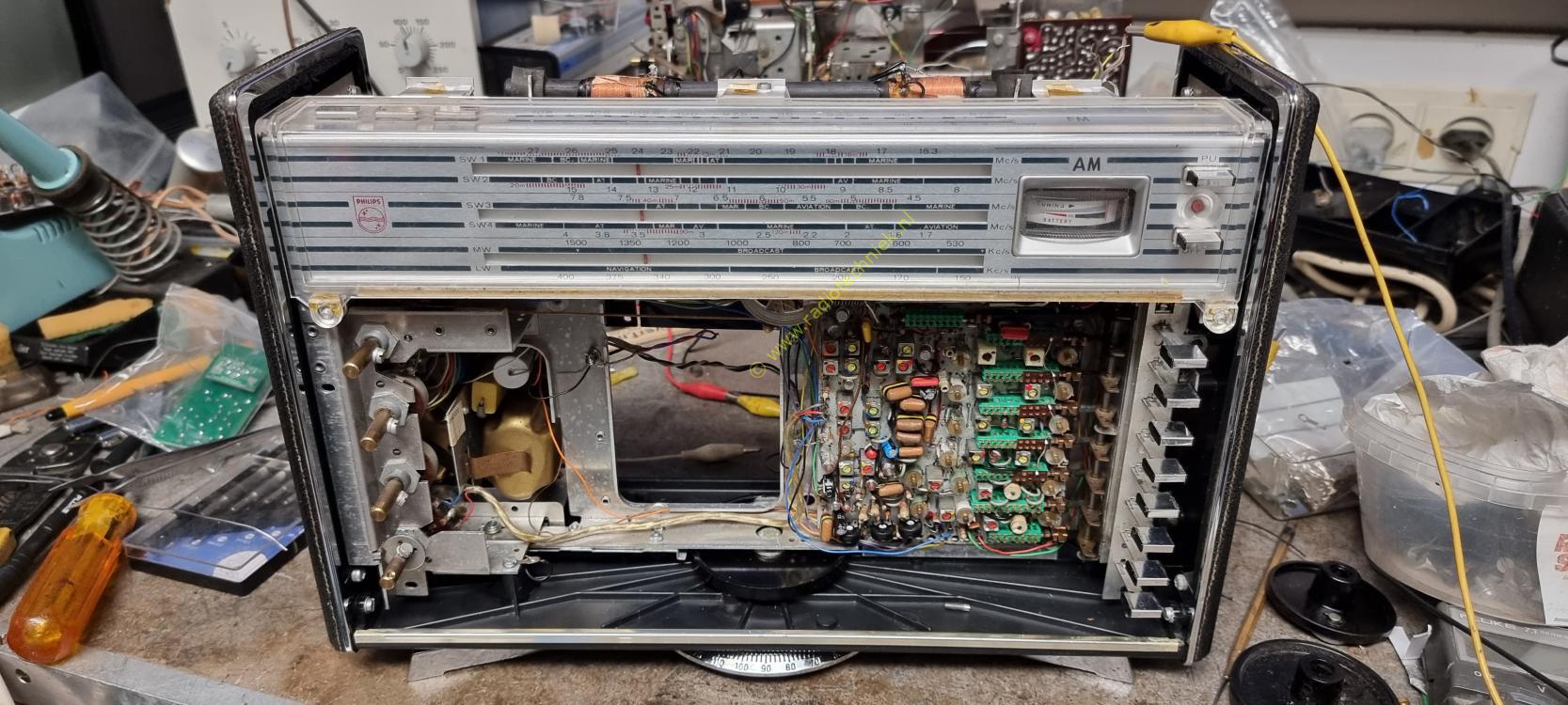
And of course the push button mechanism is all aligned. The chassis is straight again and everything fits as intended.

The switches have now been removed from the PCB. The green corrosion is clearly visible. Some of the trimmers have also been removed for replacement.

Here the PCB is almost complete except for the potentiometers. The original Philips potentiometers are very old.

The top of the pcb looks neat again. This pcb is a pcb from 1965 that has not yet had any modifications.

The construction of the chassis is of course not always easy. The print is very delicate and you have to pay close attention to what you are doing.

















































